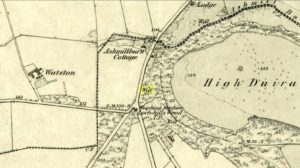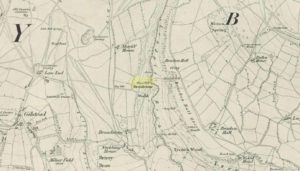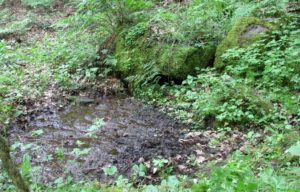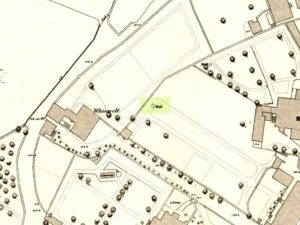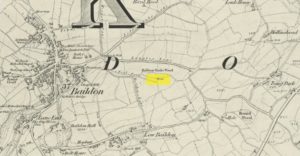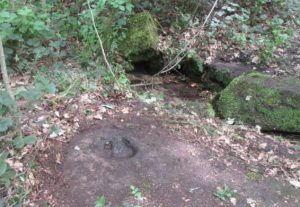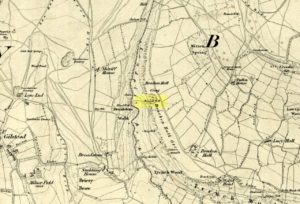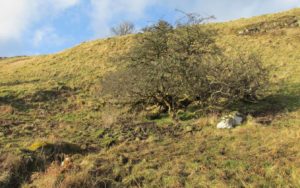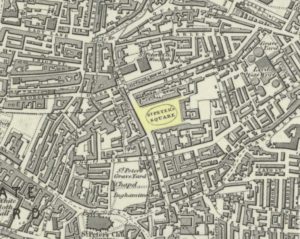Healing Well: OS Grid Reference – SK 4077 4436
Also Known as:
- Holly Well
Archaeology & History

Once visible near the middle of the village, references to this local water supply seem pretty scant. According to Kenneth Cameron (1950) it gained its name from a local man called Robert Holland. This may be the case; but there is a curious entry found in a notice regarding the Land Enclosures of Smalley from November 6, 1784. In it we read that the land here was at that time owned by one Samuel Kerry (well known in the village as he built The Rose and Crown pub in 1768) who was living “upon the Common” and had “part of a croft” here. Therein was mentioned a water source named the ‘Holly Well’ instead of the Holland Well. I can only assume that the two are the same, as the proximity of them are very close indeed. The account told that,
“a disused well in the triangular croft at the back of the sixth milestone in the village marks the site of (Samuel Kerry’s) original home, and he is said to have dug the “Holly Well” close by for brewing purposes, which has long supplied the vicinity with good water.”
The name ‘Holly’ may infer that a holly tree grew by the side of the well, and that the title ‘Holland’ was a corruption later grafted onto the site. Are there any local historians out there who know more…?
References:
- Cameron, Kenneth, The Place-Names of Derbyshire – volume 2, Cambridge University Press 1950.
- Kerry, Charles, Smalley in the County of Derby, Bemrose: London 1905.
© Paul Bennett, The Northern Antiquarian
The map could not be loaded. Please contact the site owner.
